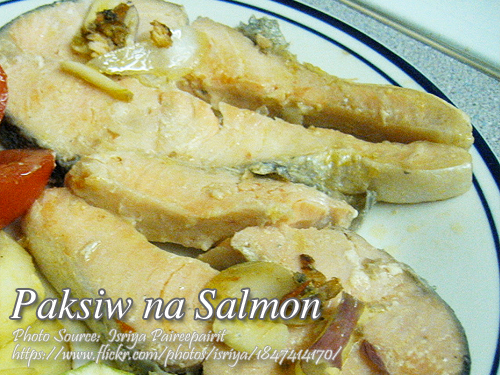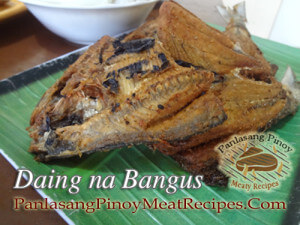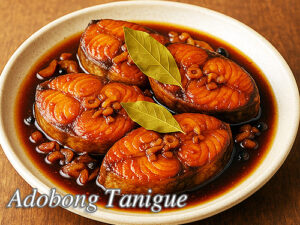Using salmon steaks in paksiw na salmon is something unique specially if there are no bangus (milkfish) available in the country where you live and there are lots of salmon. Anyway almost any kind of fish can be cooked as paksiw since this is a versatile dish. And the ingredients are simple and can all be found in your kitchen pantry and in your fridge. On the contrary, if you are going to cook this salmon na paksiw here in our country, salmon steak is very expensive but you can also cook this dish using salmon head which is cheaper.
Paksiw na Salmon: A Hearty Twist on a Classic Filipino Dish
One rainy afternoon in Quezon, my Tito Lando introduced me to his spin on the humble paksiw, a dish I thought I knew inside and out. He swapped the traditional bangus for salmon, a fish I had only really associated with sashimi or grilled fillets at fancy restaurants. But as he simmered those thick, pink steaks in a fragrant vinegar broth, I could see—and smell—that this was going to be something special.
The Art of Paksiw: Adapting to What’s Available
Paksiw is one of those dishes that embody the resourcefulness of Filipino cooking. Growing up, my Nanay often made paksiw out of whatever fish was fresh or most affordable at the market. If bangus was scarce or out of budget, she’d reach for galunggong or tulingan instead. That’s why the idea of using salmon, especially if you’re living in places where it’s plentiful, makes perfect sense. It’s a twist that stays true to the dish’s spirit of adaptability.
Salmon might not be a traditional choice, but its rich, fatty flesh stands up beautifully to the sharp, tangy flavors of paksiw. The vinegar cuts through the richness, balancing each bite with that perfect harmony of sourness and spice that we Filipinos love. My cousin Ella, who now lives in Vancouver, swears by this recipe whenever she’s craving a taste of home. With wild salmon so abundant there, she says it’s the next best thing to a heaping plate of paksiw na bangus from back home.
Ingredients Found in Every Pinoy Kitchen
The best part about cooking paksiw na salmon is that you don’t need any fancy ingredients. Most likely, everything you need is already sitting in your kitchen. Vinegar, onions, garlic, and ginger are staples in any Filipino household, and the ampalaya (bitter melon) adds a delightful, earthy contrast. My Lola Nena always said that the bitterness of ampalaya was good for the heart—and while I’m not sure how true that is, I’ve always loved how it adds an extra layer of complexity to the dish.
Speaking of vinegar, using a non-metal pan when cooking paksiw is crucial. It was one of the first tips I learned from my Tita Inday, who was a paksiw master in her own right. Vinegar reacts with metal, giving the dish a metallic aftertaste that can ruin the flavors. Trust me, it’s worth grabbing that ceramic or glass pot for this one.
How to Cook Paksiw na Salmon Perfectly
The first step is simple but important in cooking paksiw na salmon: rub a little salt on your salmon steaks before cooking. This seasons the fish from within and helps to firm up the flesh. When my Kuya Bert taught me this trick, he said it keeps the fish from falling apart as it simmers—a tip I’ll forever be grateful for, especially since salmon can be delicate.
Layer your ingredients in the pan: salmon, ampalaya, onion, garlic, ginger, chilies, and whole peppercorns. My family always says to let the vinegar do its magic first before adding water, and they’re right. When you bring the vinegar to a boil without stirring, it mellows out, losing its raw, harsh edge. Once that happens, add some water and simmer until the fish is perfectly tender.
One last touch: a dash of oil to give the sauce a luxurious sheen and a few drops of patis for that umami depth. Just as my Tatay would do, I like to leave the dish overnight in the fridge, because as any paksiw lover knows, it always tastes better the next day when the flavors have melded together.
Paksiw’s Place in Filipino Culinary History
Did you know that paksiw is one of the oldest cooking methods in the Philippines? It’s believed to date back to pre-colonial times when vinegar and salt were used to preserve food in the hot, tropical climate. Today, it’s a dish that brings comfort and nostalgia, a reminder of Sunday lunches at home, with the sour aroma wafting from the kitchen and plates of steaming rice waiting to be devoured.
Making Paksiw na Salmon Your Own
If you’ve never tried paksiw with salmon, it’s a must. The fattiness of the fish transforms the dish into something luxurious yet still simple and comforting. Like any Filipino recipe, it’s meant to be shared. My younger brother Carlo, who works as a nurse in the U.S., always says he makes this for his friends there, teaching them a little about our cuisine with each spoonful.
So the next time you crave a dish that’s both soulful and satisfying, give this paksiw na salmon a try. It’s a love letter to our culinary heritage, with a modern twist that still feels like home.
How to Cook Paksiw na Salmon
Ingredients
- 1/2 kilo salmon steak about 2 large or 4 medium pcs
- 3 pieces finger chilies siling pangsigang , sliced or whole
- 1 cup white vinegar
- 1 Tbsp whole peppercorn lightly crushed
- 1 small ampalaya sliced
- 1 cup water
- 1 medium onion sliced finely
- 2 Tbsp olive oil
- 1-2 cloves garlic
- Patis fish sauce, to taste
- 1 thumb size ginger sliced thinly
Instructions
How to cook Paksiw na Salmon:
- Rub a little salt on salmon.
- Put salmon, vinegar, ampalaya, onion, garlic, ginger, chilies, and peppercorns in a stewing pan. (Best if non-metal.)
- Without stirring, bring the vinegar to boil. Add water, and simmer.
- Add oil when broth has thickened slightly. Flavor with some patis to complement the vinegar.
- Serve next day for best taste! Serves 4.
- Preparation and cooking time: 25-30 minutes
Notes
- Choose the right type of salmon - When selecting salmon for this dish, make sure to choose fresh and firm salmon steaks or heads. Fresh salmon will have a mild ocean scent and a firm texture. Avoid using salmon that is slimy or has a strong fishy odor as it may not be fresh.
- Use a non-reactive pot - As mentioned earlier, it is important to use a non-reactive pot when cooking with vinegar. The acid in the vinegar can react with metals such as copper, aluminum, and cast iron. It is best to use a pot made of enamel, stainless steel, or clay.
- Adjust the amount of vinegar - The amount of vinegar used in the recipe can be adjusted according to your taste preference. If you prefer a milder taste, you can reduce the amount of vinegar used. Conversely, if you want a more tangy flavor, you can add more vinegar.
- Let it sit overnight - The dish is best served after sitting in the refrigerator overnight. This allows the flavors to meld together and develop a deeper, more complex taste.
- Serve with rice - It is traditionally served with steamed rice. The rice helps to balance the tanginess of the dish and absorb the flavorful broth. You can also add some sliced tomatoes or cucumbers on the side for a refreshing contrast to the rich flavors of the dish.






Trying this one now! Thank you!
Hi Lane, good luck on your cooking!
Nice, I was looking for a unique paksiw to cook this weekend. Thanks for this recipe!
Hi Mike, you are welcome!